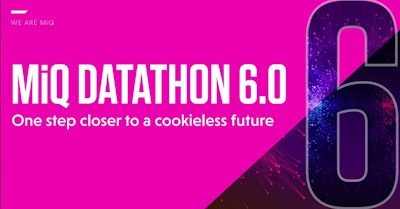
Using programmatic for branding – Why it didn’t work then but it does work now
Since the advent of programmatic buying in 2007 and real-time bidding in 2009, advertisers and buyers have looked for ways to marry programmatic solutions with branding campaigns. And it’s never really worked.
Until now.
In this three part series, we’re looking at how the programmatic landscape has changed to make brand building through programmatic not just possible, but something all smart marketers should be doing.
In part one we looked at measurement and brand safety, and how recent changes to programmatic mean brands can be sure their campaigns are being seen by real people and making a real impact.
In part two we looked at the explosion in programmatic formats and how marketers could use them for connected brand building that targets the precise audience that matters most to them.
Finally, we’re going to look at how programmatic can be a powerful asset in building and executing creatives that resonate with your audience and deliver better returns.
Let’s go.
Changing creative formats
With the advent of programmatic, the industry has shifted from a focus on placement and message to audience and target, leading to a kind of deprioritization of creative. For brand advertisers, this further underlined the challenge with programmatic, where the focus went beyond identifying the right audience and more towards building an experience that would break through cluttered digital environments.
Changes in screen sizes, rendering technology, and platforms have helped return the focus to creative design over the last few years, as both new desktop and mobile creative formats give branding advertisers larger, more interactive canvases to work with.
The result is more compelling to consumers as well, as mobile creatives generate higher click and interaction rates than their desktop counterparts. This in turn has led to a boom in spend for display advertising on mobile, where ad spend has surpassed desktop spending over the last two years.
Dynamic creative
With Dynamic Creative Optimization (DCO), advertisers can use data-driven advertising at scale by incorporating different content and imagery for an ad based on the preferences and behavior of the consumer. The most common application for this has been to place personalized products or a product carousel in front of consumers, with a focus on products that were either left in a customer’s cart or chosen via collaborative filtering methods.
Though even this has changed. With MiQ’s Dynamic Creative, advertisers can adjust parameters such as button colors, messaging, offers, call-to-action, and imagery based on the profile, preferences, or geography of the consumer seeing them.
Dynamic creative is at its most powerful when advertisers can connect multiple datasets to the creative itself. On the internal side, this can be customer or CRM data, which can then personalize an ad’s content to a customer’s preferences, or the potential value of a consumer.
On the external side, this can be based on everything from demographic data to macro trends. A brand looking to align itself with a major sporting event might use dynamic creative to incorporate live scores or events such as buzzer-beaters, grand slams, or penalty kicks to further enhance the impact of their sponsorships while capitalizing on the emotional high a fan might be experiencing from the event.
What it looks like in practice
Here’s what underpinning your creative with programmatic data looks like in a real campaign.
Let’s say you’re a brand that sells cars. You realize the frequency and positioning of your ads doesn’t drive a user into making an action. The content and design of the creative also plays a huge role in engaging users and driving conversions.
Creatives that are designed to appeal to focused target groups using relevant messaging get more user traction compared to the traditional ad creatives. Using programmatic insights means you can move beyond traditional creative design techniques and adopt a more dynamic approach to design and personalize creatives.
By analyzing a whole bunch of different creatives from global automotive brands, you can start to see the impact of different creative features like the length of animations, background colors, pricing information and even the presence of a human entity in the creative, and how these change among different audience groups. You get insights like…
- The benefits of animation depend on the platform.
Animated creatives averaged conversion rates 3.5 times higher than static creatives on desktop devices. Comparatively, static image creatives averaged conversion rates 1.8 times higher on mobile devices than animated banners. - Dark backgrounds drive clicks.
Auto ads that featured dark backgrounds averaged click-through rates nearly 2.2 times higher than those that predominantly featured lighter colors. - Showing the car matters.
Creatives with images of one or more vehicles averaged conversion rates 1.2 times higher conversion than those that did not show a vehicle. - Give pricing details captures interest.
Creatives that included pricing information averaged click-through rates 1.6 times higher than those that didn’t, as well as 15% higher viewability rates.
That’s all incredibly powerful information that you, as an auto marketer, can use to design your creatives so they’re geared towards success. In studies we’ve done, we concluded that the personalization of creatives could lead to performance uplift as high as 11-13% while keeping all other targeting parameters constant.
Let data support creative
Programmatic isn’t just about the where and the who anymore – it’s also about the what. Using the insights you glean from your programmatic campaigns can drive new creative strategies that branding advertisers can use to build more successful campaigns.
As branding advertisers re-acquaint themselves with the programmatic space, they’ll need to find partners that can help them navigate potential land mines, connect data sets, and build and measure new KPIs. Ultimately, they’ll need to partner with companies who can help them convert their existing data into the Marketing Intelligence necessary to drive business success.
Download the full whitepaper here
- 1.1



